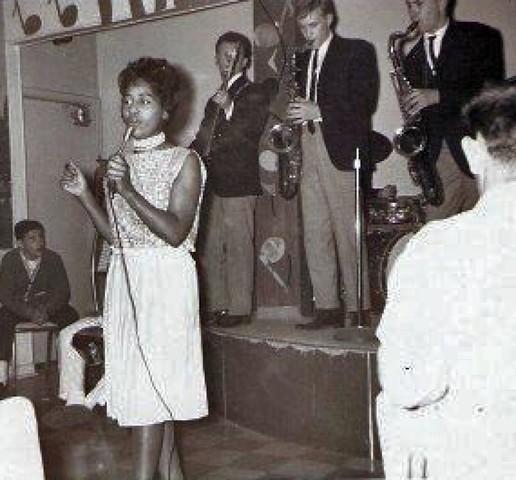
The Heart of Music City: Club Bluenote
Club Bluenote
Kay Taylor and the Regents perform at Club Bluenote, Toronto, 1960-1962. Courtesy of Russ Strathdee and Gary Copeland.
Advertisement for Kathy Pitre and Kay Taylor and the Regents at Club Bluenote. December 1961. The Globe and Mail.
Yonge Street Loves Music plaque unveiling and concert, Hard Rock Cafe, Yonge and Dundas Square, December 2016.
Home to the Toronto sound
Opened in the late 1950s by Al Steiner, Club Bluenote was located at 372 ½ Yonge Street (its address reflected its second-storey location). Club Bluenote has been called the incubator of the Toronto Sound, a specific style of rock and roll and blues. The sound was fast-paced, scratchy, and raw: a blend of Motown influence, southern American rhythm & blues, and rockabilly.
Club Bluenote was not only one of the first after-hours clubs in the city, but it was also one of the few venues on Yonge Street that didn’t serve alcohol. Crowds would pack the club until 3 or 4 a.m. on weekend nights, solely for the music.
Kay Taylor and the Regents were the house band from 1960 to 1962, often performing with singer Shirley Matthews. Her 1964 debut single, “Big Town Boy”, became a Canadian radio hit and earned her the 1964 Gold Leaf Award (later known as the JUNO Award) for Female Vocalist of the Year.
Known for its late night jam sessions
Musicians and audiences had an opportunity to hear from some of the great Motown acts such as The Supremes and Stevie Wonder, who would come enjoy a set after their shows at larger Toronto venues. The Bluenote also provided a place where young Toronto musicians could gather and learn from each other, but the crowd could be merciless. David Clayton-Thomas of Blood, Sweat, and Tears wrote that “many wannabe singers left that club with their illusions shattered forever.”
In the fall of 1964, the Rogues became the new house band at the Bluenote with Domenic Troiano on the guitar. During his lengthy career, Troiano also played for Ronnie Hawkins and the Guess Who. The Rogues eventually changed their name to Mandala, releasing the top ten hit “Love-Itis” in 1968.
A new Bluenote
Although the original Club Bluenote closed in 1969, the Club lived on in Yorkville. From 1982 to 1992, George Olliver, vocalist for the Rogues (later Mandala), owned and managed a new Club Bluenote at 128 Pears Avenue. Like its predecessor on Yonge Street, R&B defined the sound of the new Bluenote. Etta James and Wilson Pickett were among several music luminaries who headlined at the new club. Local R&B bands like the Lincolns also could be regularly found on the Bluenote stage, belting out hits like “The R&B Anthology”.
“It was like it was our music, we were entertaining each other . . . there would be half a dozen different singers there on a Friday or Saturday night . . . All those wonderful Canadian talents that ended up stepping out into the world and making a name for themselves.”
– Eric “Mouse” Johnson, drummer

